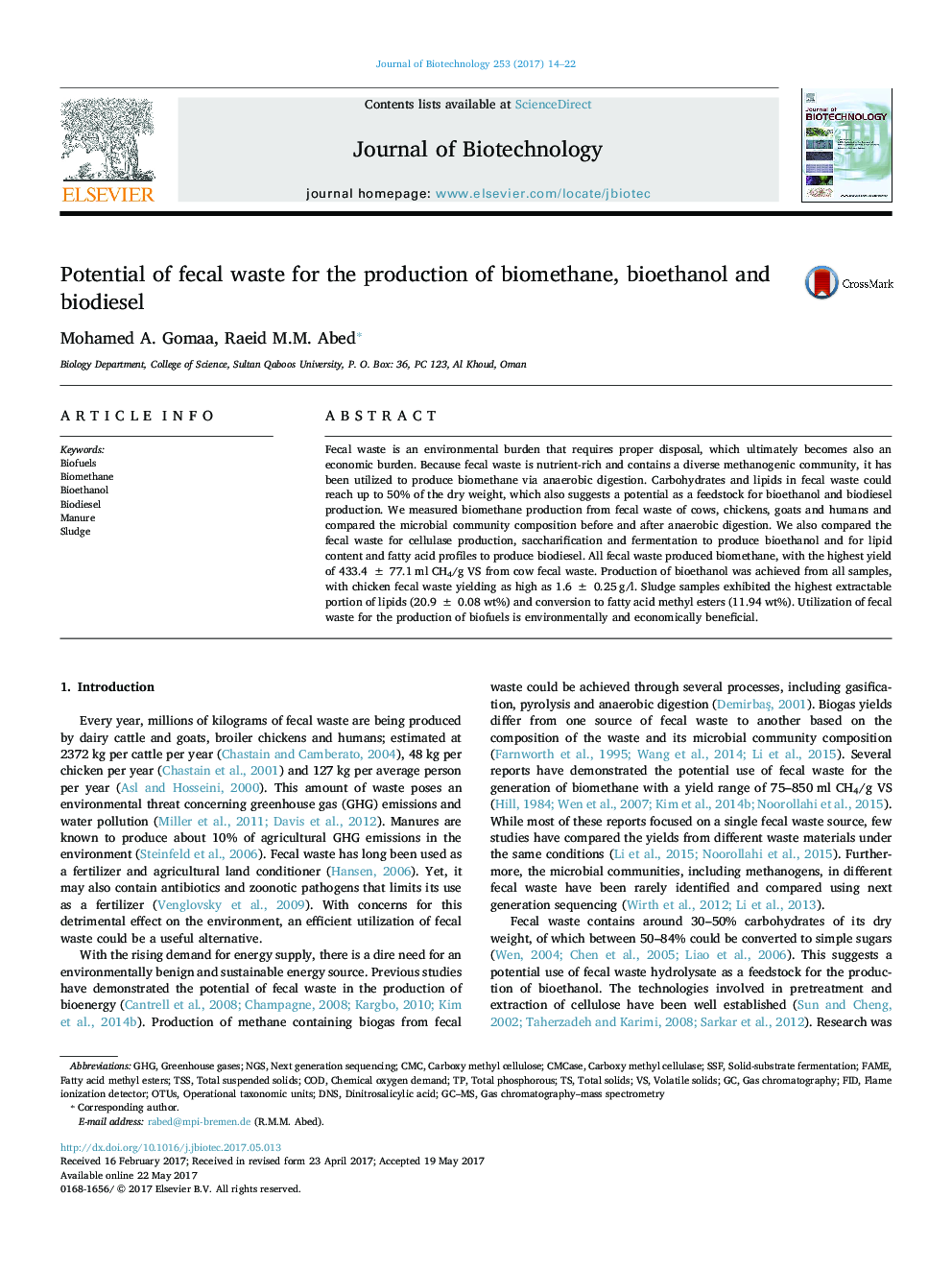| Article ID | Journal | Published Year | Pages | File Type |
|---|---|---|---|---|
| 4753659 | Journal of Biotechnology | 2017 | 9 Pages |
Abstract
Fecal waste is an environmental burden that requires proper disposal, which ultimately becomes also an economic burden. Because fecal waste is nutrient-rich and contains a diverse methanogenic community, it has been utilized to produce biomethane via anaerobic digestion. Carbohydrates and lipids in fecal waste could reach up to 50% of the dry weight, which also suggests a potential as a feedstock for bioethanol and biodiesel production. We measured biomethane production from fecal waste of cows, chickens, goats and humans and compared the microbial community composition before and after anaerobic digestion. We also compared the fecal waste for cellulase production, saccharification and fermentation to produce bioethanol and for lipid content and fatty acid profiles to produce biodiesel. All fecal waste produced biomethane, with the highest yield of 433.4 ± 77.1 ml CH4/g VS from cow fecal waste. Production of bioethanol was achieved from all samples, with chicken fecal waste yielding as high as 1.6 ± 0.25 g/l. Sludge samples exhibited the highest extractable portion of lipids (20.9 ± 0.08 wt%) and conversion to fatty acid methyl esters (11.94 wt%). Utilization of fecal waste for the production of biofuels is environmentally and economically beneficial.
Keywords
CMCSolid-substrate fermentationDNSCMCaseNGSSSFGHGTSSBiomethaneGC–MSOTUsflame ionization detectorBioethanolBiodieselchemical oxygen demandNext generation sequencingTotal solidsvolatile solidsFIDDinitrosalicylic ACIDBiofuelsgas chromatography–mass spectrometrySludgefatty acid methyl estersFAME یا fatty acid methyl esters total suspended solidsOperational taxonomic unitsCodcarboxy methyl celluloseGas chromatographytotal phosphorousManureGreenhouse gases
Related Topics
Physical Sciences and Engineering
Chemical Engineering
Bioengineering
Authors
Mohamed A. Gomaa, Raeid M.M. Abed,
